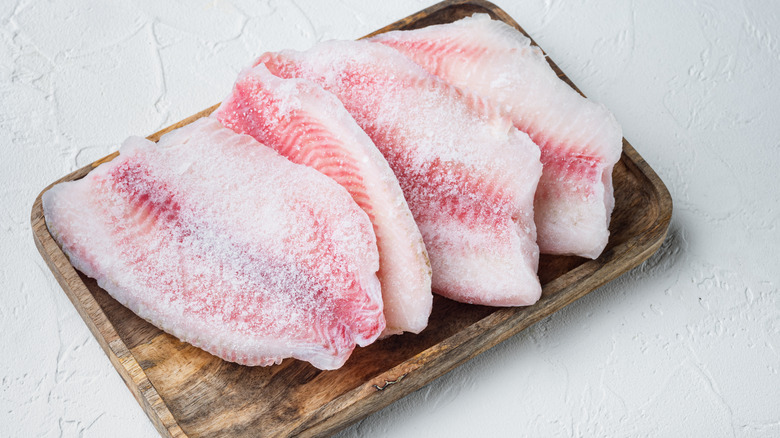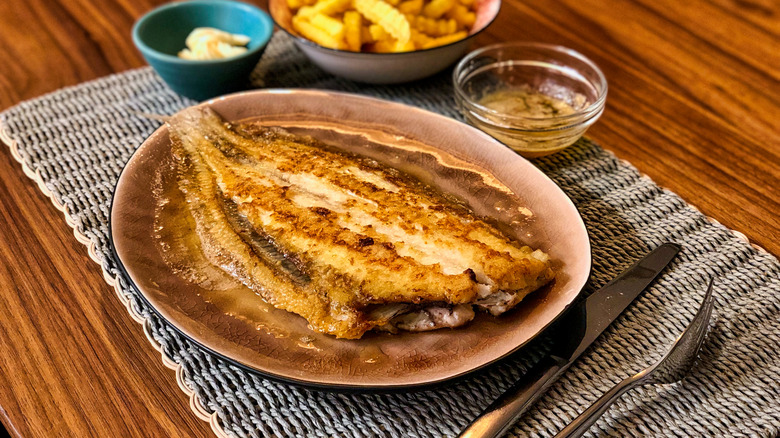This Is The Best Way To Defrost Fish
Frozen fish is a fantastic staple to have in your freezer at all times. It cooks quickly, and provides the perfect protein base for a huge variety of dishes. Additionally, it takes far less time to defrost a couple filets of fish than it does to thaw out a huge piece of beef or even a few chicken breasts.
When it comes to defrosting your fish, the best method is also one of the easiest. Simply leave it in the refrigerator overnight, and it'll be ready to use come dinnertime (via The Spruce Eats). This is made even easier if you've purchased the type of fish that is already individually packaged in vacuum-sealed plastic, as you can just toss the filets in your refrigerator without worry of any leaking. If your fish is packaged differently, just treat it the way you would any other protein you're defrosting in your refrigerator: Ensure that it's contained and can't drip or leak over anything. Forgot to take it out the night before? Don't worry. Unless you're dealing with a large, whole fish, you can take it out in the morning and still have it ready by dinnertime (via Bon Appétit).
The reasoning behind this method is the same as for other thawing proteins — it allows the fish to thaw out, but the temperature in the refrigerator is chilly enough that the fish doesn't reach the danger zone where bacteria starts to grow.
Are there any alternate methods to defrost fish?
Perhaps you got hit with a craving for sole meuniere but didn't think ahead to defrost your sole filets in the refrigerator. Luckily, there is one alternate method to defrost your fish a little more quickly. Instead of allowing the fish to hang out in the refrigerator for hours, take the fish and submerge it in a dish filled with cool water (via The Spruce Eats). The temperature is key to this method; if it's icy cold, your fish won't thaw. If it's hot or even warm, you risk putting your fish in that dangerous bacterial growth zone. Some methods suggest keeping a trickle of water running over your fish, but if you don't want to waste water, simply remember to change out the water periodically until the fish is thawed.
If you choose the cool water method, unlike the refrigerator method, the packaging makes a big difference. While you can thaw fish in a container if you're simply placing it on a shelf in your refrigerator, if you're running the protein under water, you want to make sure it's in the vacuum-sealed packaging or, alternatively, in a plastic bag of some sort. The point is, you don't want the delicate fish to be touching the water directly. If the fish becomes waterlogged, it can lead to a mushy, undesirable texture, and can have an impact on your finished dish as moisture gets released during the cooking process (via Bon Appétit).

